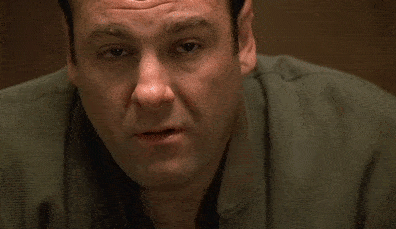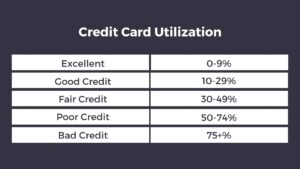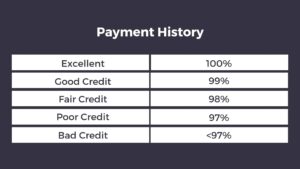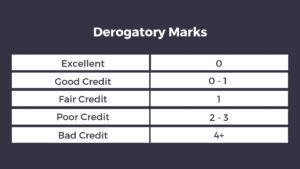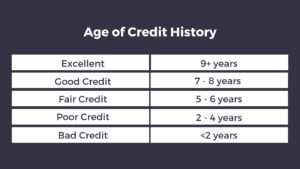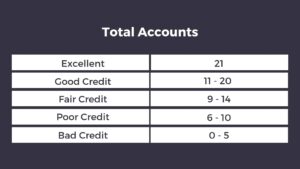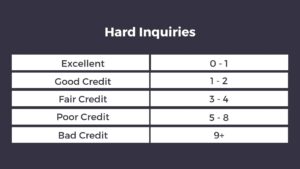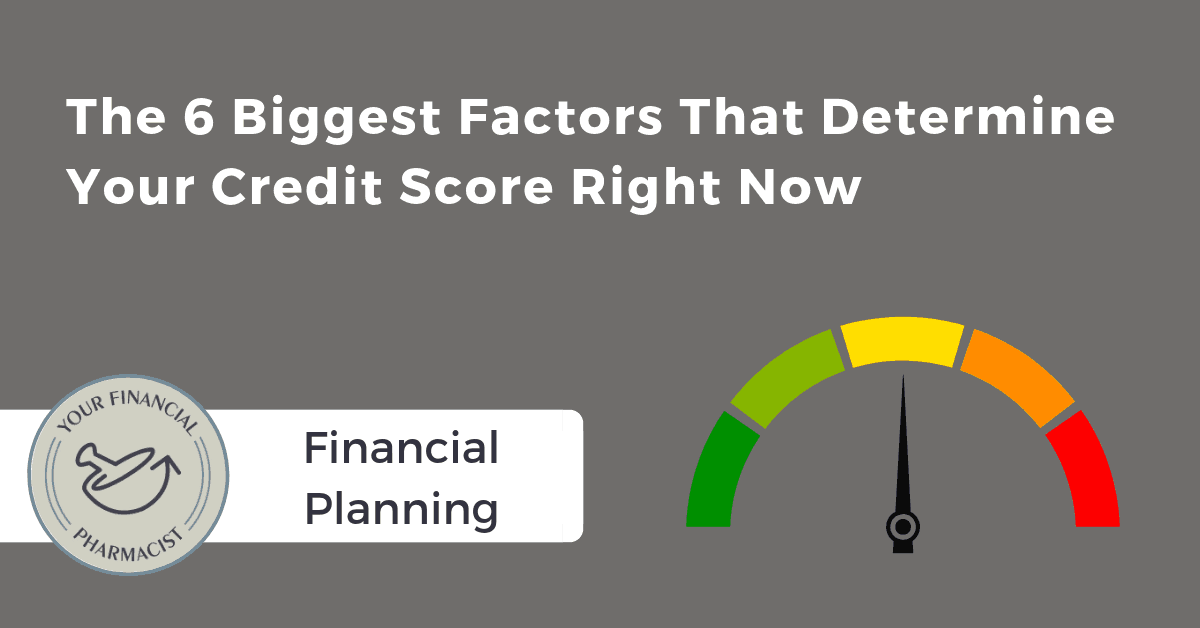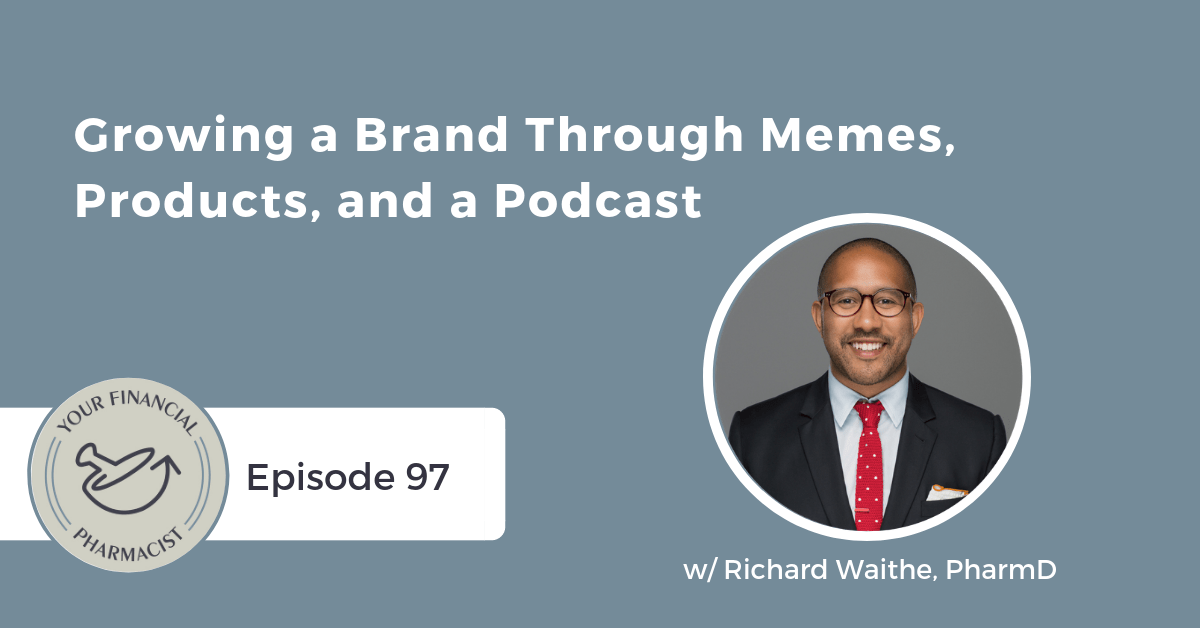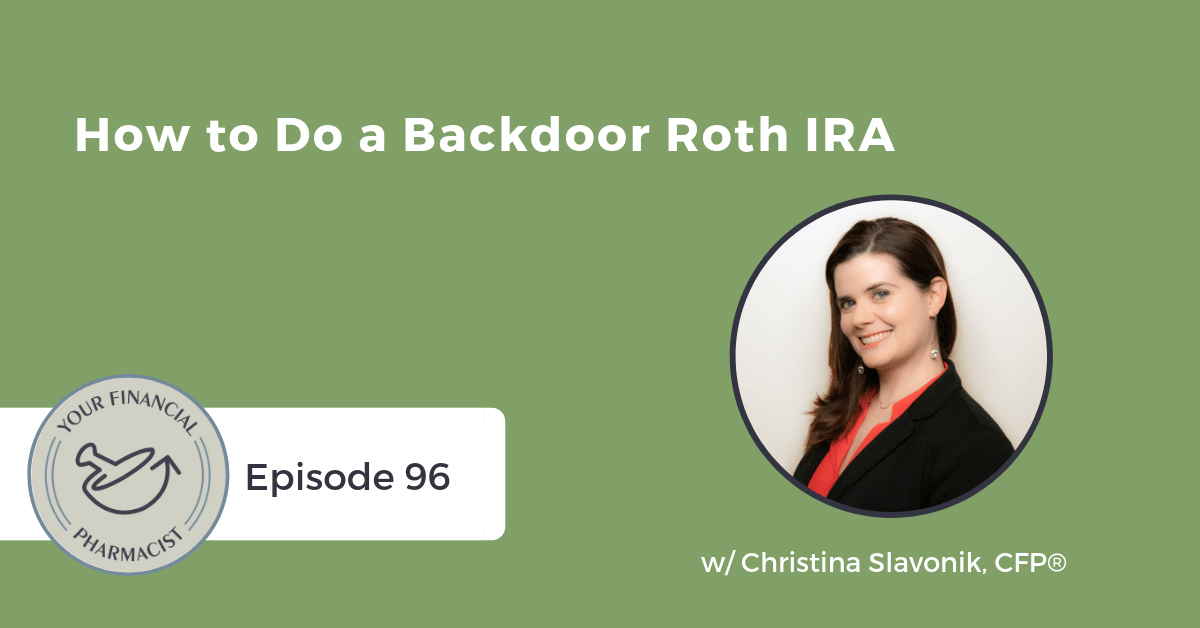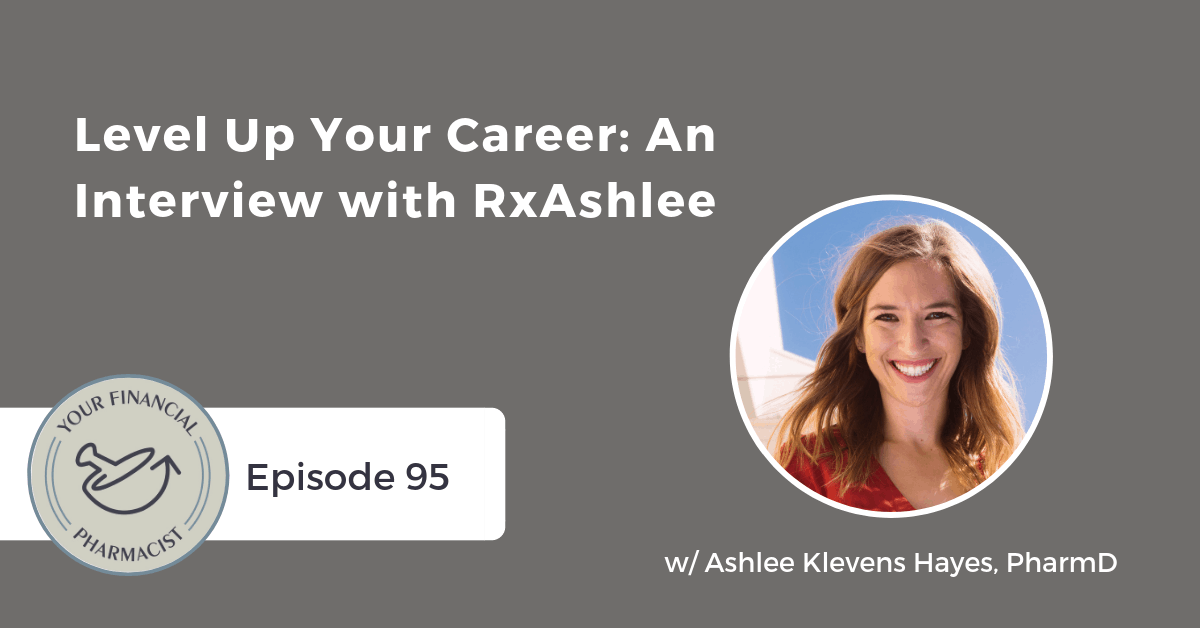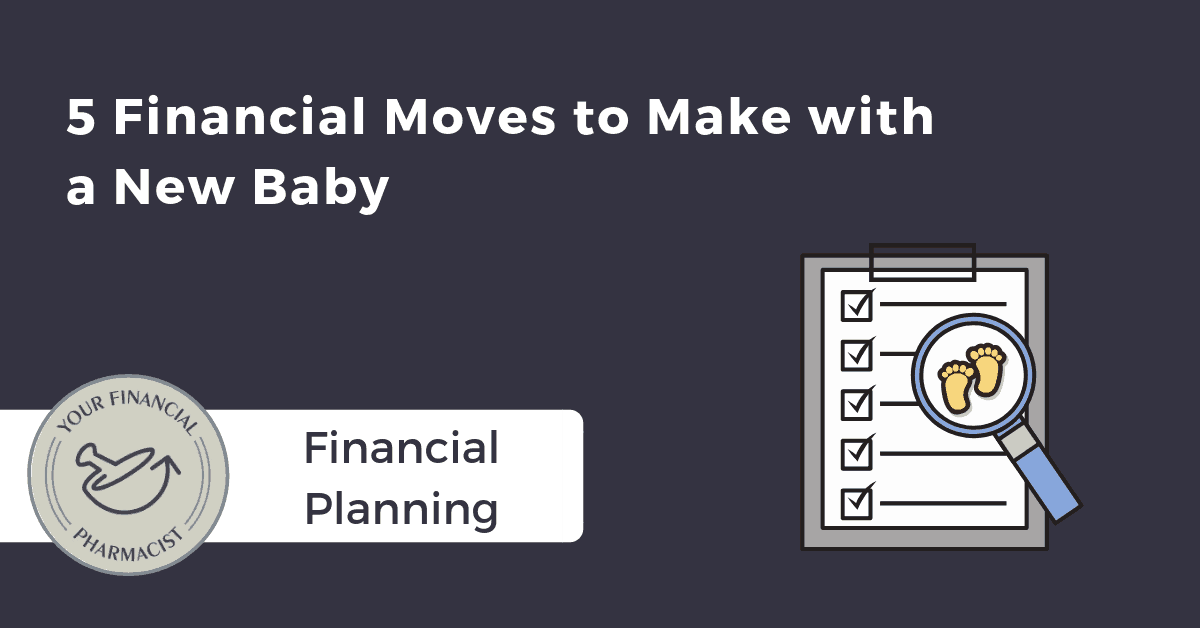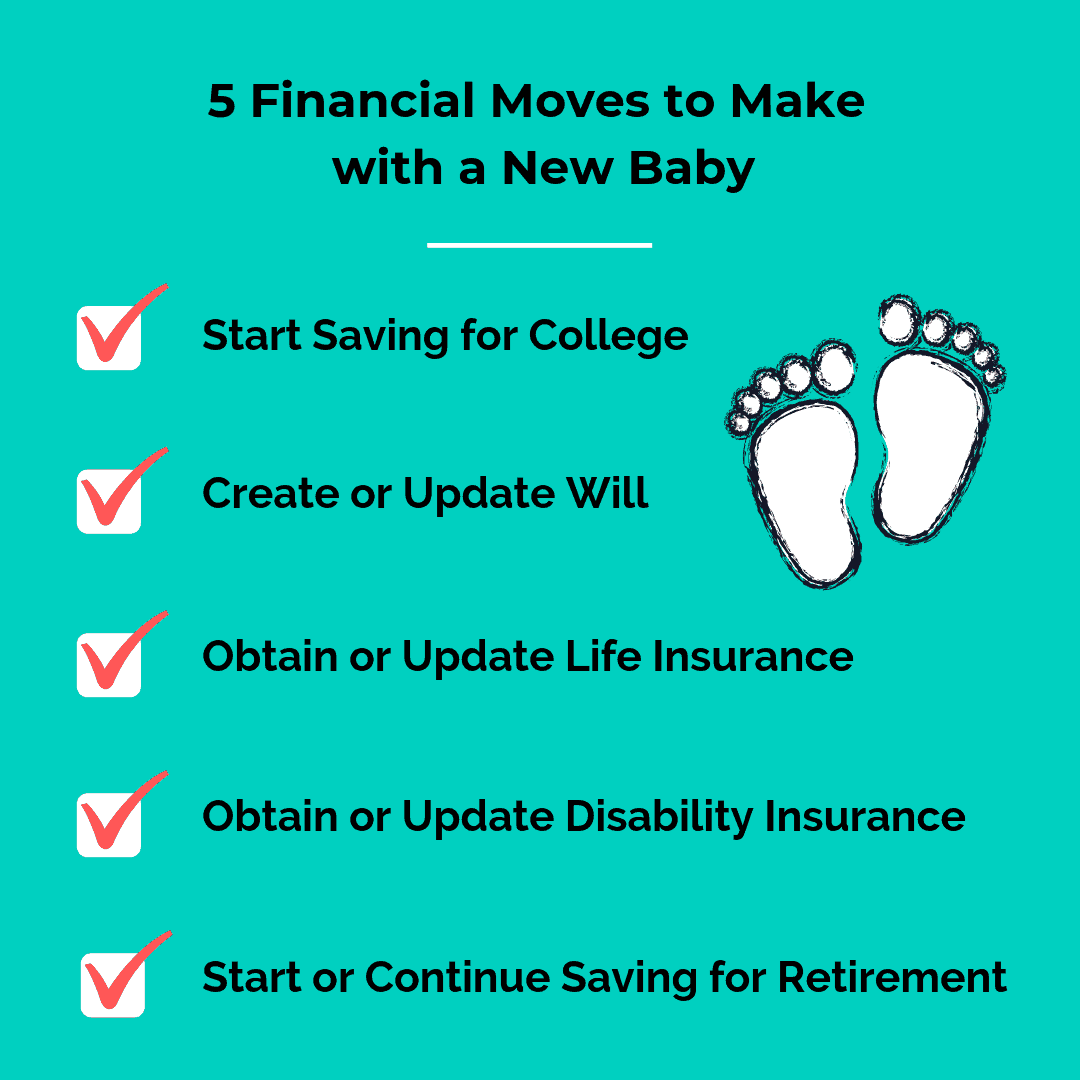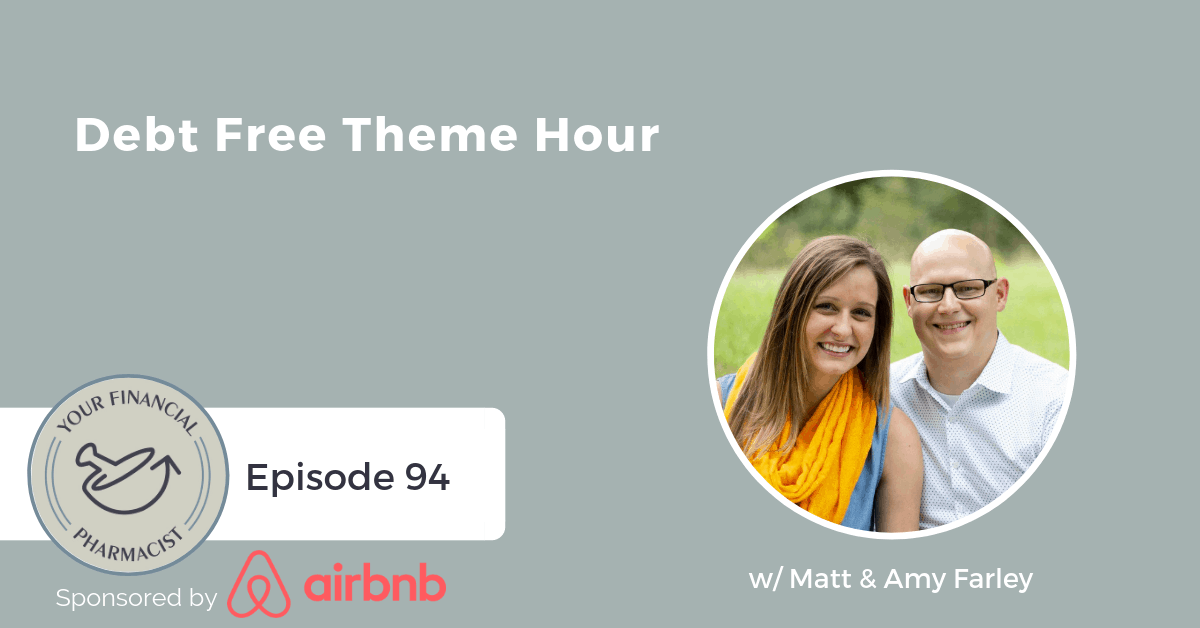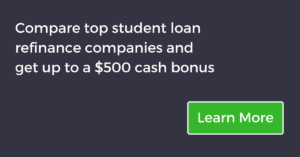Level Up Your Career
Dr. Ashlee Klevens Hayes, founder of RxAshlee and creator of the Rx Buzz Podcast, joins Tim Ulbrich to talk about her career journey and passion for supporting high-level professionals to in creating, launching and landing their dream jobs.
About Today’s Guest
Ashlee Klevens Hayes is a third generation pharmacist who set out on a traditional pharmacy path that turned into so much more. She’s an initiator, an entrepreneur and career strategist. After graduating from The University of Southern California School of Pharmacy she completed a 2-year health system pharmacy administration residency at the University of Kentucky and then took on the position of Associate Director of Central Pharmacy Operations at UK. In 2017, she founded Rx Ashlee, a career development company that focuses on business development, branding, marketing, career pivots and interview preparation for highly skilled professionals. Shortly after, she launched the Rx Buzz Podcast on the Pharmacy Podcast Network and started with the University of Southern California School of Pharmacy as a career strategist.
Summary
Dr. Ashlee Klevens Hayes is a third generation pharmacist. She is a career strategist at the University of Southern California School of Pharmacy and launched RxAshlee in 2017. Ashlee completed a 2 year health system pharmacy administration residency at the University of Kentucky and loved it. She enjoyed seeing how quickly outcomes and results could happen. Ashlee and her husband had to move 7 times in 5 years for his job making it difficult to stay in one position for a while. Ashlee transitioned to be a consultant at a startup company and was exposed to a different side of entrepreneurs.
RxAshlee began in 2017. Friends were turning to Ashlee for advice on how to get non-traditional pharmacy jobs and she realized she was able to support people in this capacity. The main trend Ashlee saw was that people were underselling themselves and that they don’t spend enough time or energy on branding so they can stand out on paper and in interviews. RxAshlee aims to help you level up your career and get your dream job.
Ashlee currently works with high-level professionals in creating, launching, and landing their dream jobs. Ashlee offers a variety of packages and services, but is incredibly passionate about interview preparation. In 1-3 hours with a client, Ashlee watches a person transform in their interviewing skills and loves hearing when clients land their dream jobs.
Ashlee reminds you that your education is a starting place and your career isn’t necessarily a direct path. Blending your education with you passions, strengths and what you want to do and then branding yourself as that person will allow you to step into fulfilling work that you want to be doing.
Ashlee reminds people that if you want to make a change in your life, you have to get comfortable with being uncomfortable. Ashlee has a lot on the horizon with her business. She has several keynote presentations in 2019 and is writing a book, among leading a women’s group and working on more courses to launch.
Mentioned on the Show
Episode Transcript
Tim Ulbrich: Hey, what’s up, everybody? Welcome to this week’s episode of the Your Financial Pharmacist podcast. I’m excited to have on here – it’s been a long time in the making – Dr. Ashlee Klevens Hayes. We’ve got an exciting conversation to talk about career development, interview preparation, business development, lots of exciting things, to share her journey on this path to the work she’s doing today. So quick introduction to Ashlee: She’s a third-generation pharmacist who set out on a traditional pharmacy path that turned into so much more. She’s an initiator, an entrepreneur, and a career strategist. After graduating from the University of Southern California School of Pharmacy, she completed a two-year health system pharmacy administration residency at the University of Kentucky, and then took on the position of Associate Director of Central Pharmacy Operations at UK. In 2017, she founded RxAshlee, a career development company that focuses on business development, branding, marketing, career pivots and interview preparation for highly skilled professionals. Shortly after, she launched the RxBuzz podcast on the Pharmacy Podcast Network and started with the University of Southern California School of Pharmacy as a career strategist. Ashlee, welcome to the show, excited to have you.
Ashlee Klevens Hayes: Tim, this has been long overdue. Thanks for having me. This is super exciting.
Tim Ulbrich: Long overdue.
Ashlee Klevens Hayes: I love talking to you.
Tim Ulbrich: So fun. Hey, I thought I knew you pretty well until I started doing my homework for this show and totally forgot about the two-year admin residency. We’re going to talk about that, your inpatient experience, I forgot about that, and – have we made the Buffalo connection before? I didn’t realize you did undergrad at the University of Buffalo.
Ashlee Klevens Hayes: I did. I moved from Orange County out to crazy Buffalo.
Tim Ulbrich: What were you thinking? I grew up in Buffalo, and I was like, why would she move from southern California to Buffalo?
Ashlee Klevens Hayes: I’ll be honest with you. My dad was faculty at the University there.
Tim Ulbrich: OK.
Ashlee Klevens Hayes: And we had some connections, and it just – long story short, it just made sense for me to go out there financially and just in terms of seeing my parents. They were traveling out there a ton, and so I made the commitment. And honestly, the first year was really hard because it was snowing, and I had never been around snow before. But then ultimately, I ended up finding my husband out there. So it was a good move.
Tim Ulbrich: Yes.
Ashlee Klevens Hayes: And I suckered him into coming back to California too.
Tim Ulbrich: I don’t blame you. I mean, it is night and day, right? Buffalo and southern California?
Ashlee Klevens Hayes: Totally.
Tim Ulbrich: I grew up in Buffalo. It’s a great city, but I mean, when you’re used to the sunshine…
Ashlee Klevens Hayes: I loved it there. No, I really did. It was a great just start to my nontraditional path.
Tim Ulbrich: Yes, yes. And we’re going to talk about that. We’re going to talk today about how to invest in yourself; we’re going to talk about, you know, how to set yourself apart. And you’re doing some awesome work in this area. And I really enjoy following your journey and have a lot of respect for your energy and your passion and your commitment in this area. So before we talk about what you’re doing today with RxAshlee and with USC School of Pharmacy – which by the way, is getting around – I had people here from Ohio State ask me about this work that you’re doing at USC, so it’s exciting to see that work.
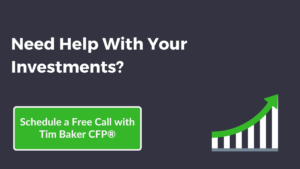
Ashlee Klevens Hayes: Oh yeah? OK, let’s do it. Let’s talk – I would love to talk to them.
Tim Ulbrich: But I want to start back at the point of graduating with your PharmD from USC. And you make this decision to go into a two-year admin residency. So PGY1, PGY2, Master’s degree, very specific for many that go through this route in pharmacy.
Ashlee Klevens Hayes: Kind of, yeah.
Tim Ulbrich: What was the goal here? And why did you make the decision at this point in time?
Ashlee Klevens Hayes: Well, to be totally transparent, like you mentioned in the beginning, my dad was a Chief Pharmacy Officer, and so I kind of had a front-row seat my entire life to all the unique, different opportunities and journeys that pharmacists could take, but my dad was a huge, pivotal point, a mentor to me forever. And he loved his job. He loved it. He loved the autonomy, he loved the business side, and he also could have some indirect patient experiences too. So I decided to join that bandwagon, and I followed his footsteps. And I ended up at UK. I was the first PGY1, PGY2 health system administration resident under the new leadership at the time. So gosh, now it’s been about 5-6 years. I don’t even remember. And so they’ve had a few others behind me, which has been really fun for me to be a mentor to them and witness them grow their muscle in that field. So you take a traditional clinical residency program and throw in a nontraditional clinical program, and you know, you have growing pains. But ultimately, the goal was for me to come out and to be a manager or assistant director or a, you know, eventually a Chief Pharmacy Officer, which I was totally down that path. I was heading down that path. I was like, this is what I want to do. I want to be a CEO, I want to be a Chief Pharmacy Officer at a healthy system, and things kind of took a change, as you might notice.
Tim Ulbrich: So what I find interesting, Ashlee – I was glad to look that up before we had talked. And we had discussed that before, but when I think of pharmacy operations and I think of you and your strengths and your talent and what you bring to the table, not that you couldn’t do operations really well, but I think you’re a big vision person, you’re a strategist.
Ashlee Klevens Hayes: I am.
Tim Ulbrich: You’re an entrepreneur. So when did that click for you? Because I’m guessing, you know, you went into the operations role post-residency.
Ashlee Klevens Hayes: Oh, I loved it. It was great.
Tim Ulbrich: Yeah, talk us through that transition.
Ashlee Klevens Hayes: It was awesome. And I was exposed to so much at such an early phase of my career that I realized I really like seeing outcomes and results happen pretty quickly. And I just felt like project management and multitasking and working with whole different interdisciplinary groups: physicians, prescribers, nurses, I loved that part of the work. What was hard for me – and Tim, I’ll be totally honest with you because that’s what I do – it was hard for me because my husband had a big job, and we were constantly having to relocate. It happened probably seven times, literally seven times, over the past five years.
Tim Ulbrich: Yeah.
Ashlee Klevens Hayes: And in order for me to have that trajectory of getting to CPO, to Chief Pharmacy Officer, it really just wasn’t ideal. And it wasn’t working. So that’s — at some point, I was like, how am I going to do this whole entire love of operations, project management, strategy, planning, vision, just overseeing so many different projects while still balancing my relocation, which is honestly — I knew going into our marriage that I was going to have to do this eventually, so then you get creative. You get thrusted into this. How do you make all of this work? And at that point, I was the assistant director, and I had an opportunity to transition into be a consultant for a startup company — a consultant in operations, and I did that. And it was so fun. And I was exposed to a whole different side of non-pharmacy work, but it was pharmacy work. It was non-pharmacy because I didn’t talk to patients at all or prescribers. It was just different because I was working with software implementation. So then I was exposed to this entrepreneur side, and I was talking — and the people I was working with had no pharmacy background. They had no pharmacy education, but yet, they were talking the language of pharmacists, and I was like, what is going on here? And it was eye-opening. I was traveling the world, literally traveling the world, traveling across the country talking to different people about our products, and I realized what do I want to do next? You know? What am I good at? What are my skills? And that was really teaching people how to do what I was doing, start a consulting company, go do nontraditional things. And that’s kind of when the fruition of RxAshlee started.
Tim Ulbrich: That’s so awesome. I mean, there’s such a need for nontraditional, you know, career paths, mentorship.
Ashlee Klevens Hayes: Totally.
Tim Ulbrich: And I was looking at your website and stuff before, and just to be able to see that merging of hearing from others that recognize that talent within you and that passion to help others and for me and what I’ve known you for the last 1-2 years, like it makes so much sense. But to hear your journey and where it’s come along was a lot of fun.
Ashlee Klevens Hayes: Yeah.
Tim Ulbrich: So we’re in 2017, and entrepreneurship, the bug sets in. And as you know, once you have the entrepreneurial bug, it isn’t going away, right?
Ashlee Klevens Hayes: No, never. Well, you can try for it to go away. And then it just never goes away.
Tim Ulbrich: Yes, yes. So true. So you start RxAshlee, which for our listeners, we’ll link this in the show notes. It’s RxAshlee.com, RxAshlee.com. So where did this idea come from to get started? Because in reality, any business starts with a problem that needs a solution.
Ashlee Klevens Hayes: Yeah.
Tim Ulbrich: So what was the problem? And what was the solution? And what did you bring to the table with this?
Ashlee Klevens Hayes: The problem was that a lot of my friends were turning to me for advice about how to get nontraditional pharmacy jobs. So problem for them, but a solution for me because I felt like innately, I kind of just knew. And I was unclear at the time why am I the one answering these questions? I’m not sure. Like why aren’t these people just going out and doing what I did? Isn’t that easy? Like just go out and do it. And I recognized there was an opportunity for me to actually, I don’t know, just support them in this capacity as actually, this could be my job. And I started doing this just for free, to be honest. I started reviewing thousands of resumes. Thousands of CVs. And I started realizing how much people undersell themselves. It’s sad, you know? I talk to these highly qualified people, very competent, very educated. It’s not like the people I’m talking to are Joe Schmoes. They’re like really legit, really, really smart people. But how we distribute ourselves and how we talk about our story and how we articulate, you know, our goals, that’s a disconnect.
Tim Ulbrich: Yes. Absolutely.
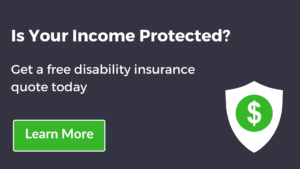
Ashlee Klevens Hayes: And especially, you know, CVs and cover letters and all that stuff, I don’t think we as clinicians spend as much time and energy and focus on how do we look on paper and our image, our brand? And so I realized that’s when kind of the fruition and the whole start of RxAshlee actually came was when I saw that I was talking to people all over the world just because I wanted to do it, like for free, for fun. And then I was like, wait a minute, I’m spending all my time and my energy and my resources. Why don’t I kind of see where this goes? And that was two years ago, so.
Tim Ulbrich: So much good stuff there, and I think back to my previous role. I reviewed thousands and thousands of residency letters of intent, CVs, and at the end of the day — and I think it must be either from, you know, just form examples or things that are out there, like unless I had met them and they had been intentional about how they branded and marketed themselves and made relationships, they all looked the same at the end of the day. They were all successful, they were all doing lots of great things, but it came down to that relationship, that networking building, and those that really could, to your point, sell themselves.
Ashlee Klevens Hayes: Yeah.
Tim Ulbrich: And so I hope the P4s and 3’s and 2’s and 1’s, anybody, really, hears that and I think the intentionality of that is so, so important.
Ashlee Klevens Hayes: Yeah, and sometimes, there’s a negative stigma around the whole phrase “selling themselves.” But we’re not built to be sales people, but at the same time, I just want to affirm to you that it’s not you selling yourself, it’s just about you talking. Being able to confidently walk up to someone, whoever it may be, especially an employer or someone who could lead you to employment, just being able to talk about yourself. And I think a lot of people are very uncomfortable with that. And for whatever reason, that’s not my problem. I have a lot of problems, Tim, let’s just be real. But that is not one of them. As a pharmacist, as a clinician, I’ve always been able to kind of keep up with prescribers, pick up on the key words, pick up on what they want to hear and how they want to hear it. And same with job employers, people who are hiring. You have to be able to articulate and just really be able to talk the talk, and that’s what it’s about.
Tim Ulbrich: Yes.
Ashlee Klevens Hayes: It’s not about qualifications once you get to a certain point. It’s not really about your qualifications or about, you know, what skills and certifications you have. It really is about just being able to confidently walk into a discussion if it’s a networking event or if it’s a job interview. Just be able to talk about yourself and why you want to do the things that you want to do.
Tim Ulbrich: So I’m curious, you’re in this moment of saying, OK, I’m doing this for fun, I’m reviewing all these CVs, and you probably have this “Aha!” moment of like, oh my gosh, if I see another Microsoft Word tracked changes document, you know, I need to eventually turn this into some type of a business, and there’s an opportunity to do so. But I’m guessing at the same time, you probably had some self-limiting beliefs, fears about is this an actual business? Will people pay for this? Is there a need? Is it validated? So talk me through that. Were there fears that were holding you back in doing that?
Ashlee Klevens Hayes: Let’s talk about — yeah, we could talk about a whole podcast episode on that. You know my story through that.
Tim Ulbrich: That was a stupid question, yes.
Ashlee Klevens Hayes: I talked to you about that a variety of times. But of course. 100%. I am no different than any of the other listeners in my fears and, you know, what people thought about me at that time. Now my life looks a little bit differently because I have results, right? I see positive results. When you see results, confidence tends to follow. At first, it just takes a little bit of courage and a little bit of humility. And then here I am a little bit of I see the results that my clients get, so now I’m like, OK, this stuff works. It’s validated. But in the beginning, let’s go back a couple years. I remember having conversations with my husband, like how am I going to do this? What are the logistics? And he looked at me, he said, “Ashlee, I don’t really care what you do. Like you do you. You just need to pay for your student loans, and you need to pay for child care, and you need to be able to like keep up with rent and keep up with our bills.” And I was like OK. So we shook on it, and I was like, “Watch me.”
Tim Ulbrich: Yeah, yeah.
Ashlee Klevens Hayes: And from there, I knew exactly how much money I needed to make in order to survive, right? Like bare minimum. I wasn’t talking about like going to Target and spending $100 there. No. I was very intentional with every penny spent. So you’ll appreciate this, Tim. I was very intentional with all of the money at first.
Tim Ulbrich: I like that, I like that.
Ashlee Klevens Hayes: You know, like I was just head down, focused on how am I going to pay my bills? Like that’s at the end of the day. And I did that for a year and then I started seeing, again, I started seeing results, and I was like, OK, so it’s time to reevaluate. I’m going to look at some services, I’m going to put together different packages. Who do I want to work with? Instead of I’ll just work with anyone. And it just really has evolved over the past couple of years. And one thing led to the next, for example, like I had a career coaching client that came to me, and we were working together for a couple months. He landed a job interview, and he called me up. He’s like, “Ashlee, can you prep me for my interview?” And I was like, “Sure.” I whipped something up, and the next morning, I prepared him. A week later, he was flown out to the job interview, he nailed the interview, like the interview of his dream job. And he called me, he was like, “You should have charged me five times that price because I got the job.” And I was like, here we go. Here comes the results. And so from there, not that — a few more too. I started creating packages for people and how I could really, really support them land their dreams jobs.
Tim Ulbrich: Yeah.
Ashlee Klevens Hayes: And it wasn’t — again, I just want to reiterate, it’s not a matter of qualifications. It’s not a matter of, you know — once you get the interview, it’s not really a matter of what’s on your resume or what’s on your CV or what jobs you’ve had in the past. It’s about how you craft your own story. And that’s what I help clients with. And that has been so potent and so powerful. And quite frankly, so fun for me because that’s what energizes me.
Tim Ulbrich: Yeah, and what I love about that — and I’m sure you hear this from your clients all the time — is that while they’re engaging with you in that, whether it’s interview prep or you’re working them through that process, that is a lifelong benefit that they’re investing in.
Ashlee Klevens Hayes: Yes! Totally.
Tim Ulbrich: Because to your point, once you knock that out of the park and it leads to a job or whatever, confidence builds. And you know, I can speak from my own personal experience, once you go through that process and you get some wins or you go through a successful negotiation, whatever you’re working through, all of a sudden, you start approaching things with a different mindset.
Ashlee Klevens Hayes: A different lens. Yeah.
Tim Ulbrich: And that mindset — a different lens, exactly. So —
Ashlee Klevens Hayes: And that’s what happens too. So I have career pivot clients that turn into interview prep clients that turn into lifelong clients because they recognize the value of investing in yourself and investing in this process.
Tim Ulbrich: Yes, yes.
Ashlee Klevens Hayes: And it’s always nice to have kind of an outsider looking into your own little bubble and to kind of give you an outside view of what’s going on.
Tim Ulbrich: So speaking on investing in yourself, I shared with you before we jumped on the interview here that for me, 2019, you know, I don’t know if I’m having a third-life crisis, whatever we want to call it, but to me, 2019 is all about game on mindset and investing in the things that I think are most important in my life. So you know, whether that’s my marriage with Jess and I, whether that’s from a career standpoint, finances, health, (inaudible), it really feels like it took me awhile to really see into that positive lens of the ROI of investing in that support.
Ashlee Klevens Hayes: Totally, yes.
Tim Ulbrich: And I think that I tend to be probably be somewhat frugal. You know, I’m the financial guy, after all. But when you begin to see the return on investment, those things that are most important, and you think about, hey, when this is all said and done, I look back and say, ‘These things were the most important,’ I’m never going to regret in making those investments. So talk to me. I’m guessing you have several clients that some get over that hurdle to invest in themselves, some —
Ashlee Klevens Hayes: 100% of clients are like, why should I ever spend money on this? Literally everyone asks.
Tim Ulbrich: What is that? I mean, give us the background on why that is.
Ashlee Klevens Hayes: Right. Well first and foremost, just because you’re the finance guy doesn’t mean you’re frugal. You’re just intentional with your time and resources and money, right? Money’s just a tool. So I love that. I mean, just because you’re an expert in money doesn’t mean you’re frugal. It means you’re smart. And you spend your money intentionally. And that should be for everything. Your life needs to be very holistic approach in the sense of where do I want to spend my energy? Where do I want to spend my money? And what do I want out of all of this? And I’m the same way. I look at everything with intentions. My diet, my lifestyle, who I spend my time with, what I say yes to, what I say no to. And I know for me personally, the more I invest in the process, the more accountable I am to the outcome.
Tim Ulbrich: Amen.
Ashlee Klevens Hayes: So for example, I mean — gosh, I have so many examples — but one of them being I myself invest in a business coach. I myself have a speaking coach because I know that I want to bring my level up, right? I’m always just like how do I perfect some of the things? How do I tweak some things? So what do I do? I invest in experts who are better at these things than me. And quite frankly, one of the things that I guess I could speak for RxAshlee is that I’m really good at interviewing. And so what I’ve turned this into is a service. And how do I teach people? And whether or not they want to invest in it is whether or not they feel like they need it. That’s a whole other conversation of if you need it or not. But I am a big believer of investing in the things that are going to give you the biggest ROI, as with you, Tim. But one of them is my marriage. I’m very committed to whatever it takes, you know, my husband and I go away two weeks every year, just us two just because it’s important for us. We get such little time just between us amongst both of our busy careers, amongst our family, balancing all of the things that we do together. So we invest in our marriage first and foremost. And that is by time away and by all other things too. I mean, marriage counseling or whatever it is you need, you have to take those steps in order to really get the best outcome. And financial advice is no different. If you don’t know how to manage your financial services, what would hold you back from investing a little bit of cash, a little bit of income, to get you the bigger result of, wow, I feel confident in the direction that I’m going now.
Tim Ulbrich: Yeah, and that’s why we share with people, I have a financial planner as well because I know at the end of the day, you know, that for me, knowledge aside, there’s always something more to learn on this. But even with knowledge on the topic, I need accountability, and I need somebody to challenge me and to set goals and to help my wife and I navigate it. So I’m with you. And if you listen and watch most of the successful entrepreneurs that are out there, I can think of probably almost all of them, the stories that I’ve listened to, that all have a coach in different areas of their life, you know? And I think that speaks to it. Let’s talk about interview prep for a minute because I think that is your jam. Right?
Ashlee Klevens Hayes: Totally. I love it. I mean, I love a lot of things, right? I’m a multi-passionate person. I love supporting clients in whole different aspects of their career, anything career-related, I just love it. But the thing is is the interview prep — to be totally transparent to me — it’s a quick win. People like quick wins. I spend a couple of hours, maybe 1-3 hours, with a client. And from time 0 to the end, it is like a totally different person. And it’s so fun for me to watch that process. So that’s why it’s been a big one because it’s very little time that I’m spending to see such an awesome result. And so that’s why it’s been growing, and it’s been huge, and the testimonials and the reviews, it shows itself. But long term-wise, I mean, I love working with clients long-term too.
Tim Ulbrich: Absolutely. Yeah, I think —
Ashlee Klevens Hayes: It’s like a constant pull of, you know, interview prep versus long-term clients.
Tim Ulbrich: I think, though, as we think about some of the things that are going on with the job market and other things, and this is a way that I think people, to your point, a quick win can really, really differentiate themselves and is one thing that has a win that will last much longer than the individual preparation work that they do with you. So for those that are interested in learning more, I know you’ve got some info on your website, RxAshlee.com. You’ve got a section on interview prep, sign up for your email list, make sure that you’re up-to-date, and I think you’ve got some information on there for a call as well for those that may be interested.
Ashlee Klevens Hayes: Yeah, I have a course that I produced. Basically, what I realized was that 99.9% of the clients that come to me have the same questions. They don’t know how to answer a few basic but sometimes tricky questions, and so what I did was in order to lower the cost and to make it just really more potent and quick for the client, I created a course. And it’s been really successful. And then what happens is if the client has more one-on-one questions, then at that time, they can invest in working one-on-one with me. And I have found that extremely beneficial because I gave you like the down-and-dirty, simple tricks on the course. But then if you want just to take it a little bit more to the next level, then I would love, obviously, to support them even more. So that’s been really fun.
Tim Ulbrich: So I want to talk for a minute about some of the work that you’re doing with USC College of Pharmacy and from my experiences in the academic world, you know, I would often do career advising with students. And they would come to me, and we’d have a conversation about their goals and aspirations, and I could tell they were down one of two tracks. They saw, really — many of them saw two paths in their mind: community pharmacy or largely in-patient pharmacy residency. And I think as I see the work that you’re doing on the “nontraditional” setting, that’s a limit we have right now is that there’s not a broad awareness of the opportunities that are out there and really aligning students strengths with the interests that are there. So tell us a little bit about —

Ashlee Klevens Hayes: Oh yeah, I could talk about that forever. Yes.
Tim Ulbrich: Yeah. And some of the work that you’re doing at USC.
Ashlee Klevens Hayes: Let me ask you a question. When students come to you, what do they define as, you know, nontraditional pharmacy? I’m just curious.
Tim Ulbrich: So if I get a response on that, they’re typically then starting, I would say maybe they broaden out to like managed care, PBM world. Sometimes I’ll hear things like nuclear pharmacy or long-term care consulting. But that really is the end of it. And if you look at the trend data at many colleges, if you take the residency pool and you take those that go into community pharmacy, that is usually 90-95%, if not in some cases more, of where the students are going. So how are you getting that message out there?
Ashlee Klevens Hayes: In my opinion, that is traditional pharmacy.
Tim Ulbrich: Yeah.
Ashlee Klevens Hayes: All of those roles. So what is nontraditional pharmacy? And I think that’s the message I’m trying to spread amongst obviously our students but just really the global pharmacy world at large is nontraditional pharmacy is whatever you want it to be. It doesn’t have to be a pharmacy title. It doesn’t have to be a specific industry. It doesn’t have to be a specific sector. What you need to do as students and as just the larger body of pharmacists is recognize that your education is just laying the groundwork for you. It’s not a direct one-to-one path. It’s not this plus that equals this. Gone are those days. No longer are the days that that’s where it’s at. And if we’re not on the bandwagon, then we need to jump on that bandwagon because we have to teach the students to get really, really creative as to what are their skills? What do they enjoy doing? You know, use your background, use your education to just be like a starter place. And then blend with that with what are you good at, what are your passions, what do you want to do in this whole entire universe. Like the sky is the limit. And then just go out and brand yourself as that person. And go out and do it. What’s holding you back?
Tim Ulbrich: Yes, totally.
Ashlee Klevens Hayes: That’s the question. And I think what a lot of schools are missing is telling the students that, giving them the support, giving them the “I think that’s a great idea, go out and do it. I support you.” I just had a student in my office this morning talking to me about how he wants to get involved in health literacy and like how he wants to do outcomes research in that realm.
Tim Ulbrich: Huge problem, right? Yes.
Ashlee Klevens Hayes: Huge. It’s an amazing topic. I’m like, “OK, well, what can I do to support you? What can we do? What internship can you get? What alumni can I support you with? You know, let’s do it.” So it’s totally changing, and we just need to lay — from day one, from ground zero, from day zero, we’ve got to get them to start thinking like outside of that white coat.
Tim Ulbrich: Oh, yes.
Ashlee Klevens Hayes: Outside of the tradition of traditional pharmacy, this is the only thing, one plus one equals two. I strongly just don’t think that that’s where we’re heading anymore. And we need to support the students in thinking that because they’re very smart. They’re very, very competent, capable human beings. They just need a little bit more nurturing.
Tim Ulbrich: Yes.
Ashlee Klevens Hayes: They just need more impetus of, yeah, that’s an opportunity. Go after it.
Tim Ulbrich: And I’ve seen this mindset develop very quickly, you know, in a pharmacy student’s schooling. I mean, their first, second year, they’re obviously watching their peers above them, they may have come in with preconceived notions of what these paths are, so I feel like there’s somewhat of an uphill battle to redefine that, right?
Ashlee Klevens Hayes: Well, of course, because they see the faculty doing the, for the most part, fairly traditional roles.
Tim Ulbrich: Yes, yes.
Ashlee Klevens Hayes: So we have to realize as faculty, as staff, these students are looking at us. We are the embodiment to what they can and can’t do. So I think what we can do as staff and faculty is really just support their dreams, support their ambitions. Don’t tell them what’s right or wrong. We don’t know.
Tim Ulbrich: Yeah.
Ashlee Klevens Hayes: Who’s to say who’s right or wrong?
Tim Ulbrich: I love that. And I think there’s so much fear there around, you know, obviously student loan debt plays a role in that, the income expectation.
Ashlee Klevens Hayes: Totally, yeah. I’m in that. Tim, that’s my jam. Like I pay my student loans — I am not innocent here. I am not student loan-free.
Tim Ulbrich: Yeah.
Ashlee Klevens Hayes: So I get it. But I’m still doing it. And I still love my job and for some reason, my husband and I are still able to pay our bills.
Tim Ulbrich: Yes.
Ashlee Klevens Hayes: So I think it’s just the whole notion of having less fear.
Tim Ulbrich: So a student who’s listening to this podcast and, you know, hopefully they don’t have Ashlee Klevens Hayes as a career strategist at their college of pharmacy, right? So they may not be getting this. But they’re maybe going to begin starting —
Ashlee Klevens Hayes: First I would tell them to follow me on Instagram. I love Instagram.
Tim Ulbrich: There we go.
Ashlee Klevens Hayes: I love Instagram.
Tim Ulbrich: Yes. We are new on the Instagram platform.
Ashlee Klevens Hayes: It’s so fun. OK, first of all, you called it “the Instagram.” No. It’s Instagram.
Tim Ulbrich: Can you tell I’m new on the Instagram platform?
Ashlee Klevens Hayes: It’s fun. It’s a creative outlet. And I think LinkedIn’s a little bit — for me, personally, it’s a little bit more professional where I don’t feel like I can voice what I really want to because I feel like I get a little bit more pushback on LinkedIn, quite frankly. Instagram is creative, there’s so many different people on there, it’s so fun for me. So anyways. We digress.
Tim Ulbrich: We do. So student, let’s say a student at University of Buffalo, here at the Ohio State University, and they’re hearing this and they’re thinking, wow, I’m really passionate about this area. I mean, health literacy is a great example. It could be one of a thousand areas of healthcare, right? There’s infinite opportunities. But they think, I don’t know where to go with this. It’s an idea. I don’t necessarily see or know of a job that’s defined. I can’t find a job posting. Where do they start?
Ashlee Klevens Hayes: Well, it’s a great question. I would say, go read my blogs. There’s like 25 blogs that I have talked about this for a long, long time. You know, where do I start? That’s everyone’s question. How do I get a job? And that’s a mindset thing. And instead of asking, how do I get a job?, ask yourself, what am I good at? What are my strengths? What does success mean to me? You know, what do I want out of my career? That’s the first thing. What are your goals? Like what is it you want to create out of this life of yours? And how do you want to impact people? And how do you want to influence people? That’s No. 1. Step 2, go brand yourself as that person. Once you’ve identified kind of the path you want to take, I didn’t start off this way. I didn’t start off by having all these different services, packages, courses, books, speaking engagements. I just started off like reviewing CVs.
Tim Ulbrich: Yep. One step.
Ashlee Klevens Hayes: Yeah.
Tim Ulbrich: Yes.
Ashlee Klevens Hayes: And then I was like, oh gosh, it’s so much more and deeper than just the CV. It’s so much bigger. And the vision is you’ve got to figure out what you want and then OK, let’s make you look like the best freaking candidate out there. And then go for it. And only do the things that are going to get you closer to that bigger vision. And I think a lot of students come to me, and they’re like, I don’t know what a vision is. I’m like, “OK, well, what do you want for your career?”
Tim Ulbrich: Absolutely. What gets you excited, right? What leaves you energized.
Ashlee Klevens Hayes: Right, exactly.
Tim Ulbrich: Yes, yes. It’s that reflection. And I’ve talked before on the podcast about the book for me, one of the books, many that were game-changers, but one that was really pivotal in kind of my path was “Start” by Jon Eckhoff. And just, it talks a lot about this concept of like be aware, reflect on the things that you cannot get off your mind because you’re so passionate about it or that people are telling you, that you’re really good in this area and helping people and doing this or that, and acknowledge that. Reflect on it. And then take one step towards beginning to articulate what that vision is. And then obviously, begin to execute on that. But we talked on your show, if you articulate the 20-year plan, that becomes paralyzing, right? But you take one step. One step.
Ashlee Klevens Hayes: Totally. Oh my gosh, yes. Let me just say, just to be clear, five years ago, if someone would have told me that I was launching this business, I would have been confused. I would have no idea that I would have been in this place. But I had an idea and I knew what I was good at. And I knew how I wanted to help people. And that’s the same definition of a lot of pharmacists out there. They want to help people. The way I help people is much different than the way other pharmacists help people. So I think you just have to have that idea of what does helping people look like to you? And then what capacity do you like talking about that? And then from there, obviously, you just put your head down and work. And you don’t give up. You commit. Commit to this. And I think that’s what’s been the best part about all of this for me is seeing the clients that commit and the outcome is huge.
Tim Ulbrich: Let’s talk about that hard work and commitment for a minute because you and I both know that starting a business is both exhilarating and it can be a grind at the same time. And I think we don’t always talk about, you know, both sides of it. And of course, the passion brings you through those moments of, you know, difficulty. Seth Godin calls them the “dips,” and you’ve kind of got to — very few people get to the other side of the dip. So what keeps you motivated through the hustle, the hard work, balancing family, all these things?
Ashlee Klevens Hayes: Oh man, good question. All of the things?
Tim Ulbrich: Yes, yes.
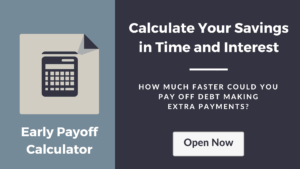
Ashlee Klevens Hayes: First and foremost, I have a daughter who I want to show her that if she puts her heart and mind to something, that she is capable of doing anything in this whole entire universe. I want her to see that firsthand. Two, I — honestly, I have a support group that I go to. I’m in a big entrepreneurship group that I lean on them hard when I’m feeling like the little bit of imposterish. I don’t think that really goes away. And three, I see the results of my clients, and that drives me. And honestly, at the end of the day, I think that’s what I’m in this for. I want to see people just as happy and thriving just as much as I am. And I think the people that I’m serving, the audience that I’m working with, they’re all so smart. So smart. I have physicians, I mean, I have pharmacists, I have you name it: agriculture, architects, lawyers, that are coming to me, and they are brilliant. So smart. They just need a little bit of tweaking. And that’s — at the end of the day, that’s what I’m good at, and that’s what I support them through. So I think the results have been a big driver for me.
Tim Ulbrich: So you alluded to this a little bit in what you just said, but you know, the reality is — and it’s hard to think about this, but I think it’s so critical for you, and I know you’ve thought about it, but our listeners also be thinking about legacy. And the reality is what you’re working on today is obviously going to be left behind for others to continue to consume, to build upon, and ultimately, you know, I’m thinking of your daughter, to look back and say, yes, that was my mom. You know? So what do you want your legacy to be?
Ashlee Klevens Hayes: Oh gosh, this could get me like choked up, Tim. What the heck? I’ve had such great mentors in my life, one of them being my dad. And I talk about him a lot. He passed away very suddenly in the middle of my second year of pharmacy school. And he was like the legacy that I wanted to live by. And one of the last conversations I had with my dad, the last, which is so powerful, is I was driving to pharmacy school, he was driving to work, and we were talking about pharmacy, all of the stressors that came along with being a Chief Pharmacy Officer. But at the end of the conversation, he goes, “Ashlee, I just want you to know, I’ve kind of like word vomited on you, but I love my job. And at the end of the day, at the end of the day, you have to make a positive impact on this world, on your job, and on the people you’re working with. Or else it’s not worth it.” And that’s stuck — and eight weeks later, my dad passed away. And that’s stuck with me now nine years ago that that’s what’s the impetus behind me launching my own brand and my own business is I love what I’m doing.
Tim Ulbrich: Yes.
Ashlee Klevens Hayes: And it’s not every single day is like skipping and rainbows. No, I get things pop up all the time. But I feel really fulfilled. And I think if I can show that to the people around me and especially like my daughter and my husband and my family, then that inspires them to do that. It’s kind of like a trickle effect, you know?
Tim Ulbrich: I do. And that’s why I love, I love what you’re doing in terms of, you know, helping people whether it’s a quick win in interview prep, whether it’s helping them make a career pivot, whether it’s helping them take their business to the next level and develop it is that has such a profound effect on every other area of our lives. And we cannot disconnect them. And I think some of the negativity that’s out there right now in the job market is a disconnect or trying to disconnect between the work and the life and all the other parts that come. And you cannot. They all influence one another.
Ashlee Klevens Hayes: No. Yeah, no. Yeah. Well, I have to say, if you’re one of those people that is, you know, feeling a little — not just unhappy. It’s more than just unhappiness, right? If it’s unfulfilled or if you feel like you’re not living up to your expectations in your career. You have to understand that if you — and I say it on my business card, it’s on my LinkedIn, it’s everywhere. If you want to make a change in your life, you have to get comfortable being uncomfortable. Because with all this newness comes uncomfortable territory. On the first podcast I launched, I talked about imposter syndrome, and I read off the screen, I was so nervous. I was shaking. And I think I should have had a cocktail before that because I was so nervous to put my heart out there and to put, you know, all these thoughts out into the world for people to look at me. But it’s working, and that’s what kind of drives me too. I’m still uncomfortable, just to be clear.
Tim Ulbrich: Sure. Yes. So give us a book recommendation, a podcast that you’re listening to, something that’s inspiring you that can inspire our audience.
Ashlee Klevens Hayes: Oh, that’s a great question. So I just read the book, “Fearless” by Jean Case over the weekend. She is the national — or I might screw up her title, but she’s like the chairman of the National Geographic. She’s the first woman or second woman to be in that role. And she just talks about all these inspiring people who came from nothing. These people are essentially — not no ones, but they came from nothing, and then they turned their lives into this huge, impactful careers. And that’s really, just hearing those stories and hearing, you know, all of her tips and tricks on how she go to where she is now, and she’s a philanthropist. It’s really inspiring. So that’s the book I read over the weekend.
Tim Ulbrich: Awesome.
Ashlee Klevens Hayes: I read so much too. Just I love reading.
Tim Ulbrich: Me too. Me too. And I’m hoping to inspire that in my boys because I didn’t have that when I was younger, but I can’t get enough of it now.
Ashlee Klevens Hayes: I used to hate reading.
Tim Ulbrich: Me too. I’m ashamed to say that.
Ashlee Klevens Hayes: Oh, I’m not. I hated it. But now, over the last three or four years, I’m in it. I love it.
Tim Ulbrich: We’ll link to that in the show notes. So what’s on the horizon for RxAshlee? What are you working on?
Ashlee Klevens Hayes: Oh, all of the things. You know, it’s always changing. But I have four keynote presentations this year, which I have to say, when you take on a big presentation in front of a big audience, it’s so much work. Holy moly. So much energy. So that’s one thing. Two, I’m leading a women’s group. It’s a branding — it’s not a mastermind, I would say, but it’s just like 10 of us that are just trying to go through career pivots or launching their own brand, and that’s been so much — I love that group. I mean, those are my people. I am writing a book, I’m launching courses. You know? It’s just keeping up the grind, and I love it. It’s so much.
Tim Ulbrich: That’s awesome. So obviously, you mentioned before, you’re on Instagram at @RxAshlee. Again, that’s @RxAshlee. And we referenced the website, RxAshlee.com.
Ashlee Klevens Hayes: Thank you, Tim.
Tim Ulbrich: Absolutely. This has been so much fun. Looking forward to more collaborations. I would highly encourage our listeners to check out the work that you’re doing over at RxAshlee.com, and I’m sure we’ll have you again on the show here in the future. Thank you.
Ashlee Klevens Hayes: Tim, I love what you’re doing. You know, we’ve had this conversation so many times, and I just want to say, thank you for what you’re doing in the profession. I know how much work it takes to put yourself out there and to kind of like just go after it. And you are a strong mentor to so many of us out there. So thanks again for having me on the show.
Tim Ulbrich: Thank you. Have a great rest of your week.
Recent Posts
[pt_view id=”f651872qnv”]
